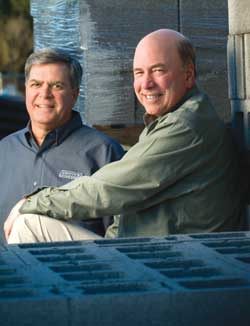Infilling Up
But just as the company began entertaining offers for the Alexandria property (and in some cases, the lumberyard business that occupied it), market conditions and building trends both inside and outside the Beltway compounded to necessitate a second look at Alexandria. First and foremost among them was an upsurge in infill activity in the Northern Virginia suburbs.
“It has become pretty intense,” says Rick. “I’m talking less than quarter-acre lots with a 1,500- to 1,800-square-foot house built right after the war—you buy one of those houses for $400,000 to $600,000 and tear it down and rebuild. That is a huge part of this market now.”
The U.S. Census Bureau also confirms a move back to urban cores nationwide. It reported in June that nearly 60% of U.S. cities with populations greater than 100,000 are experiencing population growth. It’s a trend expected to continue for decades to come, population forecasts suggest. Even markets regarded as having plenty of elbow room, like Phoenix and San Antonio, are seeing a shift back to the city.
Additionally, data from the Federal Highway Administration (FHWA) suggests that the suburban traffic problem responsible in part for the urban return is likely to get worse over the next 30 years. FHWA’s “Highway Statistics 2005,” an annual compilation of statistical data on motor fuel, motor vehicles, driver licensing, highway-user taxation, and state and local government highway finance, indicates that while the U.S. population rose 6.6% between 1995 and 2001, the number of household vehicles increased 15% and the number of “person-miles of travel” grew 16.5% in that same period. If that relative difference in growth rates were to remain consistent over the next 30 years, it would mean that by the time population grows 33% (to 400 million), expected by 2040, the number of miles we’ll be driving on our highways would climb more than 100%. That could be a positive harbinger for the 8.5% of PROSALES 100 dealers that over the past two years have indicated a planned move into infill supply.
As infill activity began to surge in the D.C. metro area, Smitty’s looked to service that new business out of Manassas. But by 2005 it found that the very growth that had powered the Manassas location and Smitty’s bottom line had become an impediment to doing quick and reliable business within the Beltway. In 2000, trucks leaving Manassas by 6 a.m. could usually beat the traffic and make deliveries on time, Smith says. By 2005, however, trucks that left at 6 a.m. would often end up sitting in morning rush hour for more than two hours to get to jobsites 25 miles away in the closer-in Virginia suburbs of McLean, Falls Church, Vienna, and Arlington.
“I guess it was hard to believe that ‘Hey, we’ve got this facility that served us for 25 years just eight miles from the U.S. Capitol and we are not shipping anything out of it,’” Rick says. “But that realization drove the Alexandria retrofit: a changing market and the proximity of Alexandria to that market. New construction is leading south and west from the city, and we can serve that with our Manassas yard, but a big volume of business is still inside the Beltway.”
At a February 2006 board meeting, the decision to remain in Alexandria was finalized, says Scott. “It was really a discussion of ‘Are we going to go for it here or not?’” he says. “Obviously, there is a tremendous amount of consolidation in the industry and we had many inquiries, but we also felt there was a void in this marketplace, and that we had some fight left in us to fill that void and bring it up to the next level by investing heavily in personnel, equipment, and infrastructure.”

